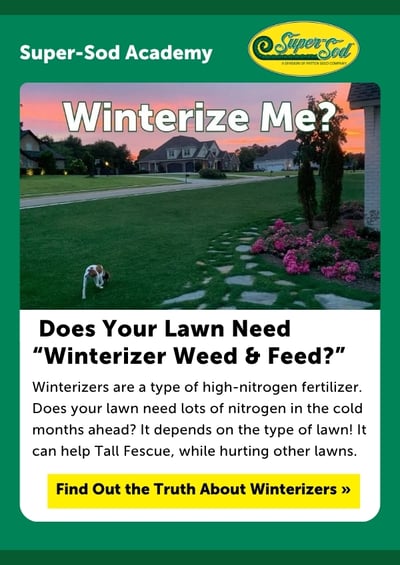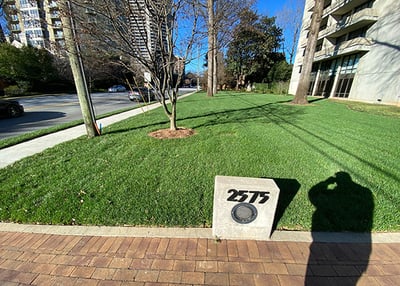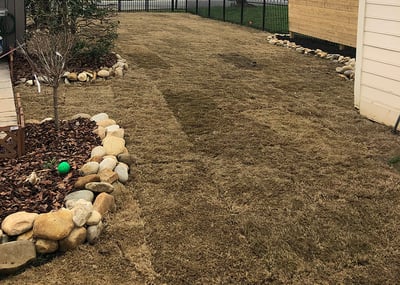
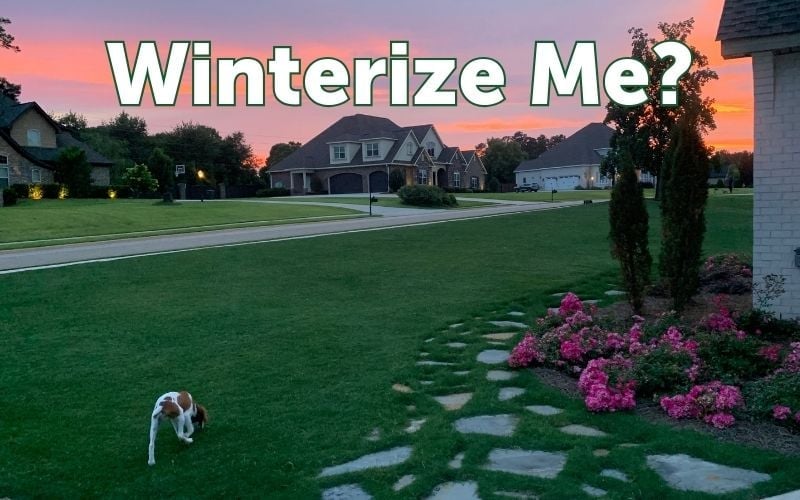
Does Your Lawn Need “Winterizer Weed & Feed?” or Not?


We are asked questions about applying a "winterizer weed & feed" product every fall. When that happens, I resist shouting, "Watch out!" and tackling their bag of winterizer fertilizer because applying it to a warm season lawn, such as Bermudagrass, Centipedegrass, or Zoysiagrass, in the fall may actually kill it.
I bet you’re wondering, "How can that be? It’s supposed to 'winterize' and protect my lawn during winter."
Yes . . . and no. Lawn winterizers have high amounts of nitrogen and are created for fall and winter applications to cool season grasses, so if you have a Tall Fescue lawn, they’re safe enough to use as long as you don’t plan to overseed your Tall Fescue (the "weed" part of "weed and feed" also prohibits grass seed germination).
Yet, if you have a Tall Fescue lawn, you're not receiving any protection or benefits from all that extra nitrogen in lawn winterizers, so you do need to skim these pointers.
You don't need to get grass winterizers to prepare your warm season lawn for frosty mornings like this. Keep reading to learn the best cultural practices for "winterizing" your warm season lawn without high nitrogen.
Reasons to Avoid Winterizers
"Winterizers" have several variations of the wording and you may see these other terms used: winterizer fertilizer, lawn winterizer, grass winterizer, or winterizer weed and feed.
Different names . . . with all the same style of high nitrogen fertilizer that you want to avoid for any type of lawn, at any time of year.
Refer to this Venn diagram as you read.
It will help you keep all these fertilizer ratios straight..png?width=800&height=600&name=Nitrogen%20Fertilizer%20ratios%20(1).png)
- Too Much Nitrogen: Typically, winterizer fertilizers have too much nitrogen for warm season lawns, especially in the autumn. Next time you’re in the garden center, look at the fertilizer ratio on the winterizer bag and notice how it’s always high in nitrogen (the first number in the fertilizer ratio), such as a 32-0-10 ratio. Here at Super-Sod, we don't even sell fertilizer with that much nitrogen in it, for any type of lawn.
- We Recommend Smaller Amounts of Nitrogen for All Lawns:
- Warm season lawns do need regular nitrogen during their summer growing season to promote dark green color, vertical and lateral growth, density, and some disease resistance (such as dollar spot resistance). Instead of 32-0-10, we recommend smaller amounts of nitrogen like ratios of 16-4-8 or 5-10-30. That’s half the amount (or less!) of nitrogen than in typical winterizer fertilizers.
- For cool season Tall Fescue, instead of 32-0-10 we recommend 16-4-8 or 18-24-12 for healthy, rich green growth during the height of its growing season in the cool months. During summer, cut down on nitrogen for Tall Fescue to reduce diseases. Our 5-10-30 is low enough in nitrogen to be safe for Tall Fescue during summer. For Tall Fescue that's also around half the amount of nitrogen than in typical winterizer fertilizers.
- More N = More Mowing: Besides the waste of unnecessary nitrogen, we don’t recommend the tremendous amount of nitrogen in winterizer fertilizers for any type of lawn at any time of year because the more nitrogen you apply, the more you have to mow.
The extra growth is no joke. Here are real-world examples:
- If you apply a 32-0-10 winterizer fertilizer and you mow your Tall Fescue once a week, you may need to mow it twice a week to prevent scalping until the nitrogen moves through and your lawn calms down.
- Same for Bermuda or Zoysia. I normally mow my Zeon Zoysia lawn every 7 days, but last summer I fertilized with extra nitrogen and I had to mow more frequently (every 5 days) to prevent scalping. I did get extra growth from the runners I was encouraging to fill in a bald spot, so that was a win. The downside was that I mowed twice a week for all of humid July because I also got a lot of extra top growth.
- Fall Dormancy: In September, warm season lawns are already slowing down and starting to go dormant – even if you cannot perceive it. Nitrogen is the nutrient that promotes lush leaf growth and at the high levels in a grass winterizer, it promotes rampant growth at a time when a warm season lawn should be allowed to slowly, gently become dormant.
If your warm season lawn is too tender with lush new growth when hard frosts settle in, your dream lawn can be damaged. Avoid high nitrogen in late summer and autumn so your your lawn can naturally go to sleep as the days shorten and nights cool. (Note: Low nitrogen such as in our 5-10-30 with Acelepryn insecticide is safe). - Pre-emergent is the Other Main Ingredient: The "weed" part of "weed and feed" is a pre-emergent herbicide that prevents seeds from germinating. We don't sell "weed and feed" because there are two downsides to coupling nitrogen fertilizer with pre-emergent herbicide into one product.
- Pre-emergent herbicide will prevent weeds from germinating, but only if applied in September, February, or April when the soil temperatures are correct for the majority of weeds to germinate. So, if you're spreading a "weed and feed" during other months, it won't do what you're expecting - it won't prevent many weeds.
- Pre-emergent herbicide will also prevent lawn seeds from germinating and new sod from rooting, so if you spread "weed and feed" around the time you're planting grass seed or laying sod, then you're preventing the sod/seed from rooting too.
- Pre-emergent herbicide will prevent weeds from germinating, but only if applied in September, February, or April when the soil temperatures are correct for the majority of weeds to germinate. So, if you're spreading a "weed and feed" during other months, it won't do what you're expecting - it won't prevent many weeds.
Super-Sod doesn't recommend winterizer fertilizer for warm-season lawns such as this Zeon Zoysia lawn. It is cold-tolerant and withstands winters in the South.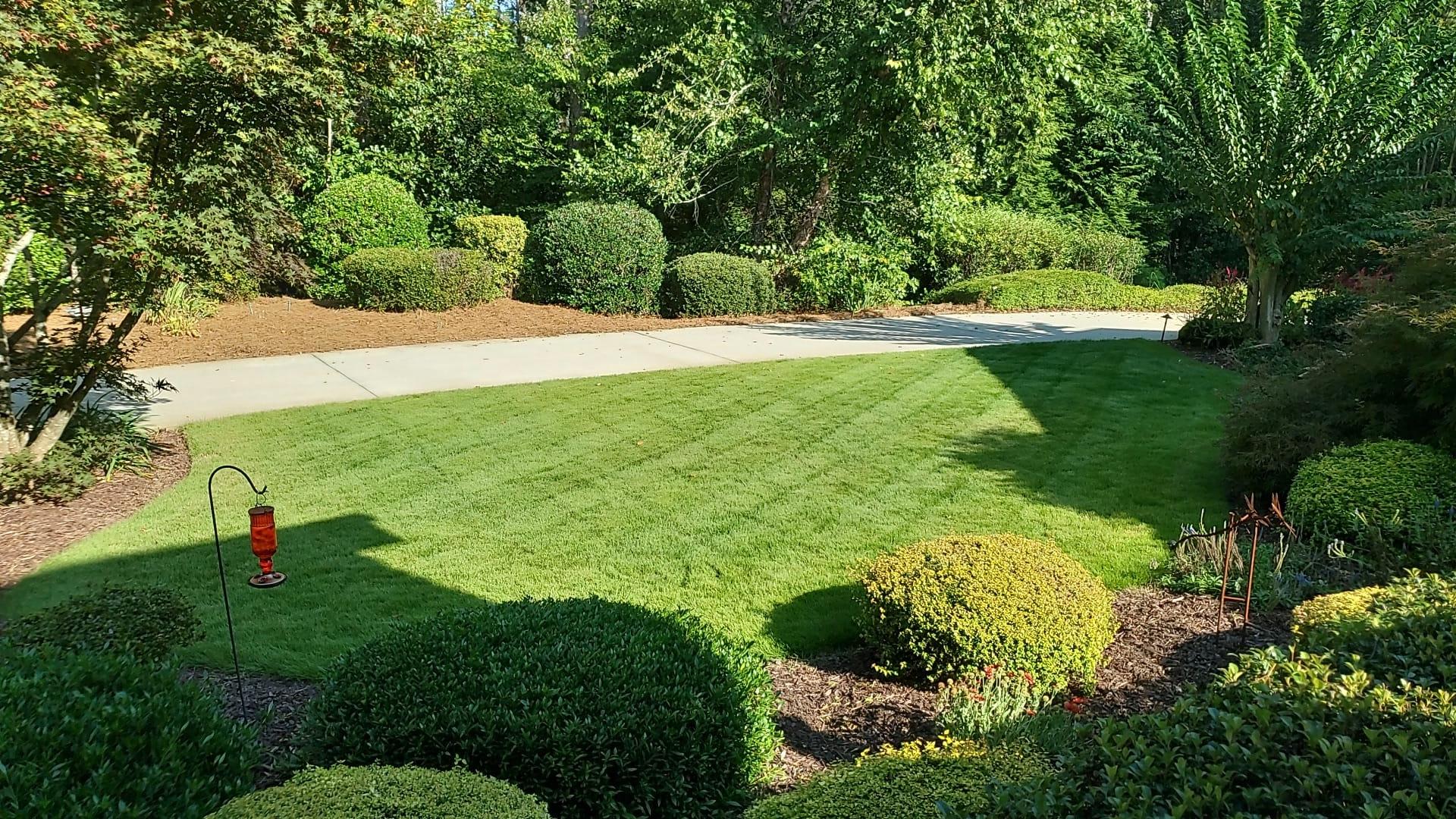
3 Tips for Preparing Warm Season Lawns for Winter
Instead of opting for winterizer fertilizers for warm season lawns, follow these three tips to prepare your Bermuda, Centipede, or Zoysia lawn for winter.
- Apply Pre-emergent Herbicide: You can address the "weed" part of "weed and feed" by applying a pre-emergent without nitrogen. Pre-emergent with 0-0-7 is safe because the nitrogen level is zero, and potassium (the third number) doesn’t push tender, new growth. The potassium is included to improve your lawn’s resistance to fungal diseases and increase cold tolerance. Pre-emergent spread from September 15th to October 15th prevents a whole crop of vigorous winter weeds such as annual bluegrass, bittercress, and chickweed (we also recommend the same pre-emergent in February and April to prevent summer weeds).

- Apply Fungicide: Apply systemic fungicide in October or November, especially if your lawn has previously had outbreaks of fungal diseases, like any of the issues with "patch" in their names (example: large patch, brown patch).
- Mow Until Dormancy: Don’t let your warm season lawn go into winter in a long, shaggy state. Continue to mow at your regular mow height until your lawn is fully dormant. Because my Zeon Zoysia lawn goes dormant later than many others, I have mowed as late as the first week of December (I’m in zone 8a).
In a nutshell, while it’s technically safe to apply a winterizer fertilizer to Tall Fescue lawns during the cool months (even though they don’t need that much nitrogen), don’t apply them to warm season lawns any time of year, due to those high amounts of nitrogen.
Instead, to prepare your warm season lawn for winter, we recommend pre-emergent herbicide, fungicide, and mowing until your warm season lawn is fully dormant.
To prepare your cool season Tall Fescue for winter, we recommend overseeding with fresh Tall Fescue seed, applying lime, and applying fertilizer (not winterizer!) or compost. To help you revitalize your Tall Fescue in the fall, we have those products available to order for pick up or delivery. 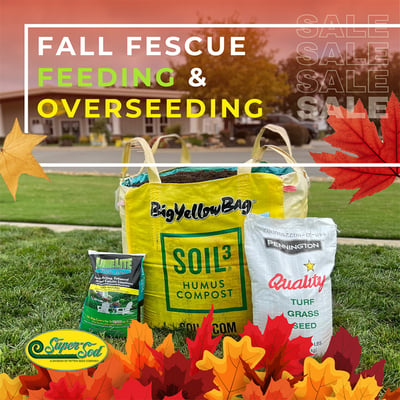
Our goal is to empower you with the facts you need to make informed decisions and take control of your own lawn care.
Questions? Leave a comment below!
If you're new here, subscribe to our emails to get information like this in your inbox every month.
Originally published in the Triangle Gardener Magazine, September 2023. Reprinted with permission.





